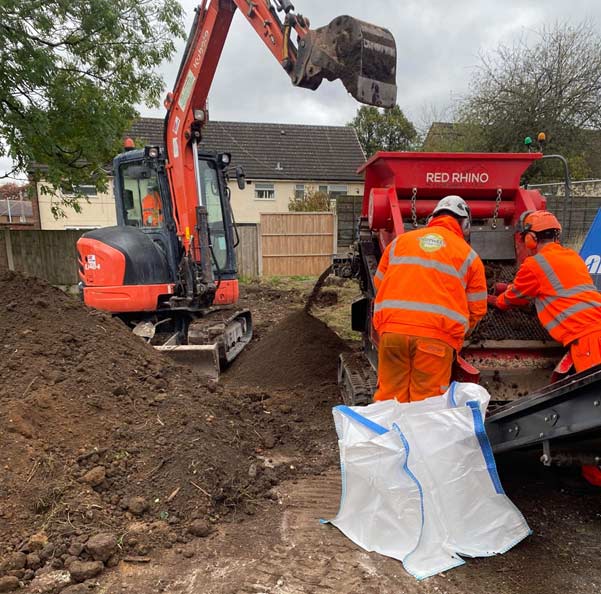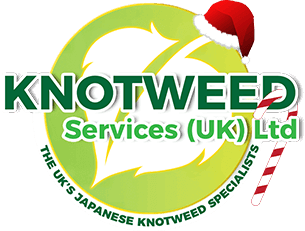JAPANESE KNOTWEED REMOVAL Hedge End
9
LIVE KNOTWEED JOBS IN Hedge End
445
SUCCESSFUL KNOTWEED REMOVAL PROJECTS IN Hedge End
100%
SUCCESSFUL PROPERTY SALES AFTER TREATMENT
6
Hedge End BASED KNOTWEED STAFF
NO OTHER JAPANESE KNOTWEED COMPANIES IN Hedge End HAVE OUR TRACK RECORD
At Knotweed Services , we pride ourselves on our ability to provide Japanese knotweed treatment, control, and removal services that leave our clients completely satisfied. Our unmatched expertise, combined with our many years of experience, has enabled us to earn a reputation for quality that other Japanese knotweed companies in Hedge End simply cannot match.
The PCA is a government-approved trade body for “the damp, waterproofing and wood preservation industries.” Any PCA member will be able to give you the best advice and guidance on controlling and eradicating Japanese knotweed.
Knotweed Services, we are a company with the goal to help people with knotweed problems. We have completed large and complex eradications in and around Hedge End and England.
Know Your Knotweed!
Japenese Knotweed has many negative impacts on the properties it infests. Mortgage lenders are usually unwilling to lend against homes that have an infestation. This impacts both buyers and re-mortgagees because these lenders will not lend against the property.
Knotweed Services has the necessary expertise to help you manage your Japanese Knotweed infestation cost-effectively, allowing you to get on with other aspects of your project.
Prevent this Pest from taking over a Property
- Knotweed can grow into tarmac and concrete, which poses a threat to the structure of your property.
- Mortgage lenders generally will not lend on a building that has Japanese Knotweed on the premises.
Knotweed produces massive annoyance that obstructs visibility and access to paths, highways and other infrastructure. It is a particular nuisance for commercial properties.
We specialise in the removal of Japanese knotweed, a highly invasive plant species that grows with unchecked rapidity. Our services include removal of the plant from a property, giving our customers 100 percent certainty that they can sell or purchase their chosen property.



FREE IDENTIFICATION
Fill in the form below, attach your pictures and we’ll let you know if the plant in your picture is Japanese Knotweed.
Call our experts ASAP to start the treatment and control of your infestation in Hedge End
Call us on: 0121 725 6348 or 0800 689 4146 for an swift estimate
Knotweed Services will guide you through the process from the point of initial contact until we handle everything for you.
RESIDENTIAL JAPANESE KNOTWEED REMOVAL Hedge End.
WHAT YOU NEED TO KNOW ABOUT JAPANESE KNOTWEED REMOVAL Hedge End
As Japanese knotweed infestations vary considerably, so do treatments for Japanese knotweed removal. One method of Japanese knotweed removal may not be enough to eliminate the plant.
We take a scientific approach to weed control. Our weed specialists examine a site’s specific factors to determine the type of treatments that will give the best results. We guarantee all our work.
— JAPANESE KNOTWEED REMOVAL OPTIONS AVAILABLE IN Hedge End

FOLIAR SPRAYING *
Most common treatment. The spraying of powerful chemicals with a knapsack. We ensure that other plants aren’t damaged. The most effective time for foliar spraying to Japanese Knotweed is in Spring.

FOLIAR LEAF WIPING *
With this Japanese knotweed treatment, our chemicals are “physically wiped” into the leaves of the Japanese knotweed using a device. This application is so accurate that we can frequently employ a greater chemical concentration.

STEM INJECTION
We directly administer a measured amount of herbicide to the invasive weed. Due to the injection directly into the Japanese Knotweed, this is the most ingenious elimination technique. It is not affected by the weather.

BIOMASS REDUCTION
We only remove the soil that has been afflicted with Japanese Knotweed when we use biomass, which is a type of excavation and removal. Reusing the soil makes it a great approach for controlling Japanese knotweed. decreasing landfill usage.

CROWN REMOVAL
Removing the crown and stem from the equation is an excellent method since they can regenerate, and even small pieces of chopped crown or stem can regenerate and become a new invasive weed.
— COMMERCIAL TREATMENT OPTIONS AVAILABLE IN Hedge End

SOIL SCREENING
A tried-and-true technique utilised on hundreds of sites throughout the UK.
The rhizome material of Japanese knotweed is isolated from the soil material by means of screening. The Japanese knotweed debris is subsequently transferred to a licenced landfill at a substantially reduced disposal rate, or it is burnt on-site with an exemption D6 from the Environment Agency or Natural Resources Wales.
The cleansed soils can then be reapplied elsewhere, typically in soft landscaping areas where they will not interfere with construction.
This can greatly minimise landfill and backfill expenses while also reducing the site’s carbon footprint due to fewer trips to the dump by vehicle.

BIOSECURITY SUPERVISION
We can send a biosecurity operator to your property to monitor any excavations or movement of Japanese knotweed-containing soil.
As part of these steps, we can set up a location near the site’s entrance where people can wash their boots and machines. We will supply the primary contractor on site with all toolbox discussions, which will be signed by all contractors involved in the operation.
In situations where biosecurity is necessary, we may provide temporary geotextile barriers.
We will supply the client with a thorough biosecurity report once the service is concluded.
This procedure can be used in conjunction with other on-site treatment methods.

EXCAVATION AND DISPOSAL
This treatment method is ideal where time constraints are present and there’s no other option other than to remove both the Japanese Knotweed and contaminated soil to a registered landfill.
By removing all traces of the infestation quickly, this offers a rapid solution to your problem and allows your commercial project to begin groundwork’s almost straight away. When time is of the essence, there is no quicker Japanese Knotweed removal/treatment method.
Any waste taken off-site will be done so with a licensed waste carrier to a suitably authorised landfill site.

CELL BURIAL
Cell burial comprises of moving Knotweed contaminated soil from one location on site, burying it in an excavated pit which is lined with a root barrier membrane, in a different position on the site.
The burial requirements for Japanese Knotweed are as follows:
- The Environment Agency recommends that the top of the burial cell should be a minimum of 2 metres below ground level.
- The overall depth of the burial pit should be in excess of 5 metres deep. All root barrier seams are welded together forming an encapsulated cell from which the Japanese Knotweed cannot escape. Clean soil is then used to backfill on top of the cell.
- To prevent accidental disturbance of the burial site, it is recorded on all site plans and future land owners should be made aware of the location.

STOCKPILE & TREAT
Japanese knotweed-contaminated soil can be moved to another portion of the site being treated using a technique called bunding. A bund is a patch of polluted soil that is only a few metres deep.
To make the surface flush with the surroundings, the bund can either be lifted, placed on top of the land, or positioned inside an excavation.
The bund’s function is to relocate the Japanese knotweed to an inactive portion of the land. The Japanese knotweed may now be treated, which would not have been possible in its original location.

HERBICIDE APPLICATION
At Knotweed Services we can provide the client with bespoke treatment plans depending on the locations of the Japanese knotweed.
These plans can work in conjunction with other methods of treatment where access is limited to pedestrian movements i.e., embankments or existing pathways within a site.
This will normally consist of up to 3 visits per annum to apply herbicide by either foliar spray technique or stem injection during the growing season over a period of 3 years, with a monitoring period of 2 years thereafter.
We would select the appropriate herbicides depending on the surrounding foliage or environmental constraints.
After each visit a full treatment record would be provided with photos showing the progress of the works and then an annual report.
